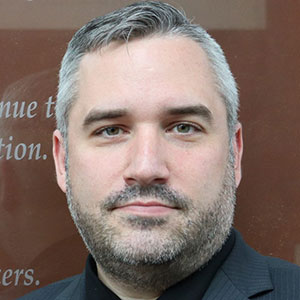
Resolving conflict between team members critical for psychologically safe workplaces
By Bill Howatt and Troy Winters

Photo: Adobe Stock
Most leaders know that employees’ feelings drive much good and bad behaviour in the workplace. Hurt feelings are part of the human experience, so there is little chance employees will not have conflicts resulting in hurt feelings.
A critical skill for leaders is understanding how and when to help employees resolve conflict, move past hurt feelings, feel heard and valued, and work together to find the best resolution for all parties involved.
How confident are you dealing with team conflict on a scale of one to 10? What facts did you base your score on? One way to confirm your score is to ask your team members. If they do not feel comfortable or hesitate to answer, this may be a sign you have work to do.
Conflict is not the problem; it is how it is dealt with. Conflict results from a difference in perception, values, or treatment. Following are ideas for leaders to deal with employees who end up in conflict in their day-to-day jobs and goals.
Prepare for conflict by setting expectations. Your role as a leader is to teach your team that you expect conflict to happen; it’s normal. When conflict occurs, focus on helping team members resolve it. Explain how you will deal with the conflict by getting all the facts from each side, seeking to understand desired outcomes, and assessing their motivation to find a resolution. The goal is to talk about conflict as an opportunity, normalize it, and make it clear that you have a role in dealing with conflict so it does not fester and create turmoil.
Take conflict seriously. Set the norm and habit that conflict is not ignored; it is dealt with. Do not make assumptions or judge. Get both sides’ facts to avoid making wrong conclusions. Allow all parties to resolve the conflict themselves, if appropriate, to reinforce the expectations that this culture deals with conflict. Ensure employees are clear on the why so the conflict does not escalate into a bigger issue. Focus on finding a resolution and repairing hurt feelings when needed.
Tips to help employees resolve conflict
Resist the urge to judge without facts, assume you are correct, or belittle conflict. Adopting the mindset that conflict is an opportunity to learn, grow, and strengthen relationships helps leaders normalize it and not attach negative judgment. It is normal for employees who care and are passionate about their work to disagree, resulting in conflict.
Self-check
Before jumping into a conflict, determine if you are the right person to act. Ensure you can be neutral and unbiased and are within your competency to assist. If the conflict relates to an inclusion concern, are you skilled to deal with it? Leaders must help employees deal with conflict but must have the necessary skills. If unsure, chat with a trusted peer or HR for guidance. If you are confident the situation is within your competency, proceed with a clear vision. Your role as leader is to help employees work together safely and respectfully.
Take stock
Once you determine you are the right person to resolve a conflict, listen to each person involved to learn their position, concerns, fears, and desired outcome. Get the facts and answers to the following:
- What is the root cause? Is it a single event or an historical pattern? How long has it been going on?
- Are there hurt feelings? Does anyone feel scared or psychologically unsafe?
- Are organizational factors like workload or uneven recognition practices contributing to the conflict?
- Do the parties want to resolve the conflict, and why? If not, why?
Move past the conflict
Once you have collected the above data, move past the conflict to resolution. Getting through a conflict means all involved need to talk. Your role as leader is to set the stage and ensure everyone feels psychologically safe. Anxiety is expected because many do not like dealing with conflict; it brings negative emotions.
- After speaking with all parties, look for common ground for a resolution and buy-in. Be open to adjusting. The goal is to move past conflict.
- Let the parties involved know that you need to make decisions if they cannot resolve this conflict. Not working collaboratively to work through conflict is not an option. There must be a resolution.
- Explore all options and impacts on all parties involved. Ensure all parties feel respected and their points of view are heard.
- Look for ownership and personal accountability in the conflict. All parties should own their parts and not put all the blame on the other side.
- Once all the best options to resolve the conflict are identified, the parties must agree and understand the actions and potential consequences of not following through. A clear plan with check-ins and feedback loops is required.
- Once the action plan has been implemented, ensure it is working. Make tweaks needed to close gaps and check in with all involved to establish critical learnings from the conflict.

Dr. Bill Howatt is the Ottawa-based president of Howatt HR Consulting.

Troy Winters is a senior health and safety officer at the Canadian Union of Public Employees (CUPE) in Ottawa.